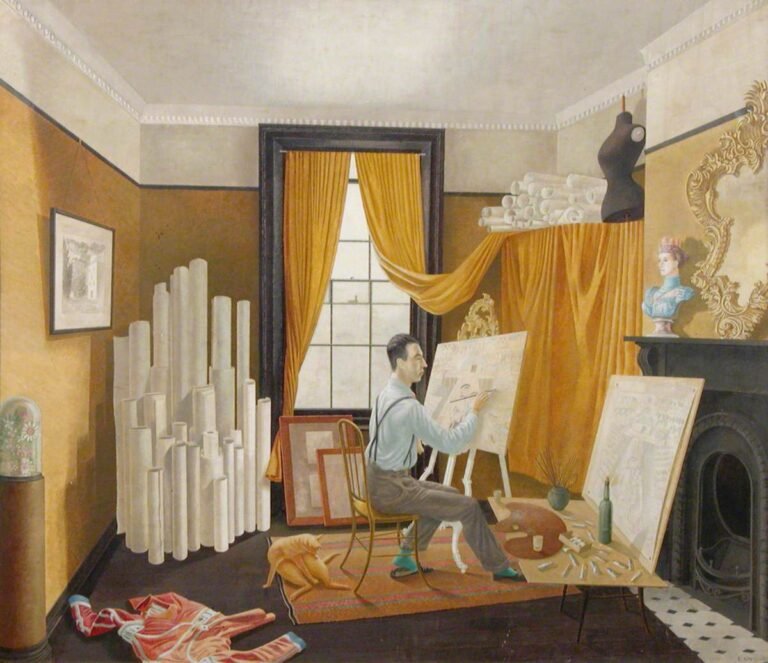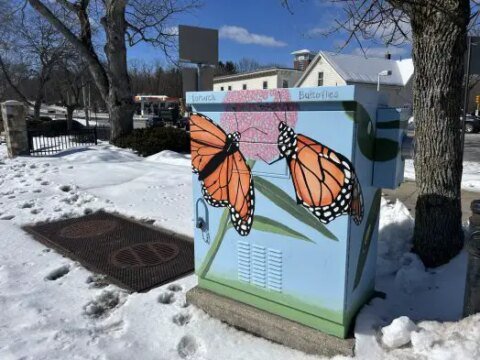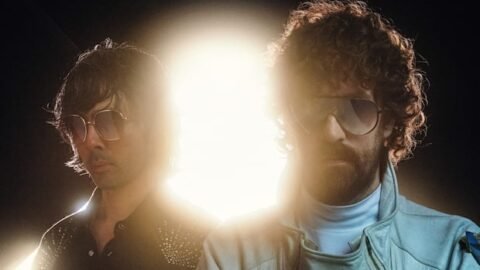
On either side of a doorway in Pallant House hang two paintings. One is of Jean Cooke, painted by her husband, John Bratby. The other is of John Bratby, painted by his wife, Jean Cooke. Bratby, a pioneer of kitchen-sink realist painting in Britain, was infamously cruel to his wife. He scratched over many of her works and imprisoned her in his room when he feared she would leave him. Bratby’s portrait of Cooke epitomizes his disdain: in his distinctive thickly applied bright colors, he paints Cooke naked at their kitchen table—crowded with cornflakes boxes, jam jars and other items he owned. She looks cold and afraid, her eyes pleading with the viewer; she’s as much a consumer good in his eyes as the breakfast cereal. On the other side of the door hangs Cooke’s painting of Bratby. In her depiction, the Angry Young Man is rendered a middle-class stereotype, sitting at the same chequered kitchen table. An unflattering portrait, Bratby looks neither handsome nor radical. Instead, the painter who was obsessed with his self-image is shown to be conservative, bland and boring. The painting was Cooke’s subtle revenge against Bratby.
This pairing is among the many paintings that are in dialogue with each other in “Seeing Each Other: Portraits of Artists,” currently on display at Pallant House in Chichester, a charming country town in the south of England. A short train from London, Pallant House’s exhibition examines the various ways artists use their medium to portray other artists. Some do it as an act of love, painting muses, spouses, friends and family. Others, like Bratby, betray their own prejudices in their depictions. Some, like Cooke, use art as retribution.


It’s an excellent concept, hampered only by the weight of its potential. With a brief so big, how can one curate a show that flows and maintains some narrative semblance? “Seeing Each Other” brings together more than 150 artworks by over eighty artists—paintings, sculpture, photography—covering a century of artistic admiration and jealousy. All of the works are British, and the exhibition is partially a chronicle of British artistic fashion, with works from the Bloomsbury Group to the YBAs. Indeed, the show is the third in a trilogy of exhibitions by Pallant House exploring British art, and at times “Seeing Each Other” feels like a history of twentieth-century Britain.
Many of the artists represented—both on and off the canvas—are household names. Hockney, Bacon and Freud all enjoy plenty of face time. A particularly moving portrait is Freud’s study of his friend and lover John Minton. Minton asked Freud to paint his portrait after seeing and being impressed by a portrait of Bacon by Freud. Minton’s long face is uncomfortably close to Lucian Freud’s canvas in this 1952 portrait that eerily captures Minton’s depression in its color, proximity and expression. Minton committed suicide a few years afterward.
Freud himself is depicted elsewhere in the exhibition by another of his lovers, Celia Paul. In Lucian Sleeping, the bad boy painter looks close to death as he sleeps. He is gentle and utterly powerless in Paul’s rendering. Some portraits empower, others infantilize. A painting like Lucian Sleeping helps erode the mythology around that most fabled of artists. When the muse in question is also an artist, it gives us a whole new lens through which we can view the other’s work.
There are other brilliant standouts in “Seeing Each Other.” Mary McCartney’s photograph of Tracey Emin, who is lying on a bed dressed as Frida Kahlo, an homage within an homage. Some portraits are conceptual, like Lubaina Himid’s painted wooden cutout, which is a portrait of Bridget Riley, mimicking Riley’s bright lines and colors. Johnnie Shand Kydd’s photographs capture the wild energy of the nineties, presented in a video slideshow that gives the exhibition some pulse.


Some artists depict artists from a previous time, like Gillian Wearing’s photograph in which she depicts herself as Georgia O’Keeffe. But most works in the exhibition are depictions among contemporaries—artists who knew each other in real life. It’s funny to think how someone can forge such a crafted public persona through their own life and work, only for it to be shattered—or at least compromised—by someone else’s depiction. Some gazes in Pallant House are kind. Others are cruel. Some are indifferent, which is surely the worst of all.
“Seeing Each Other: Portraits of Artists” is on at Pallant House Gallery through November 2, 2025.


More exhibition reviews





